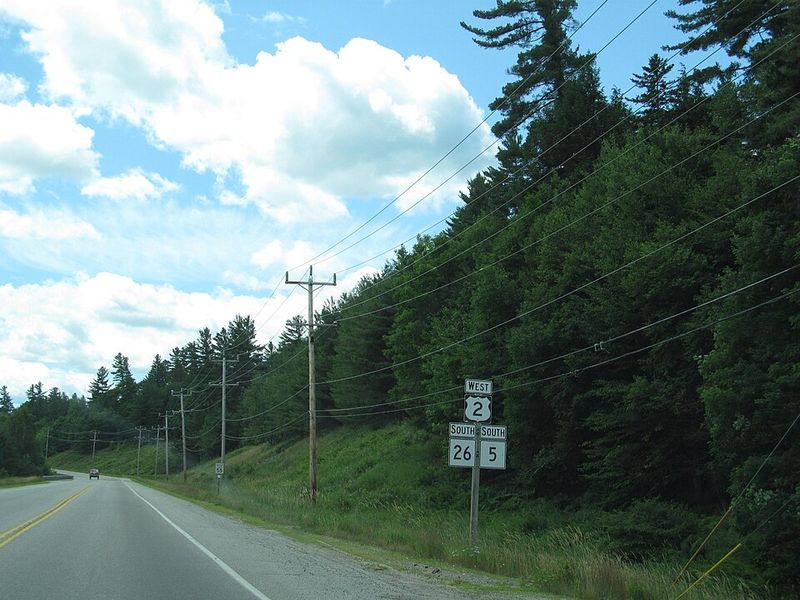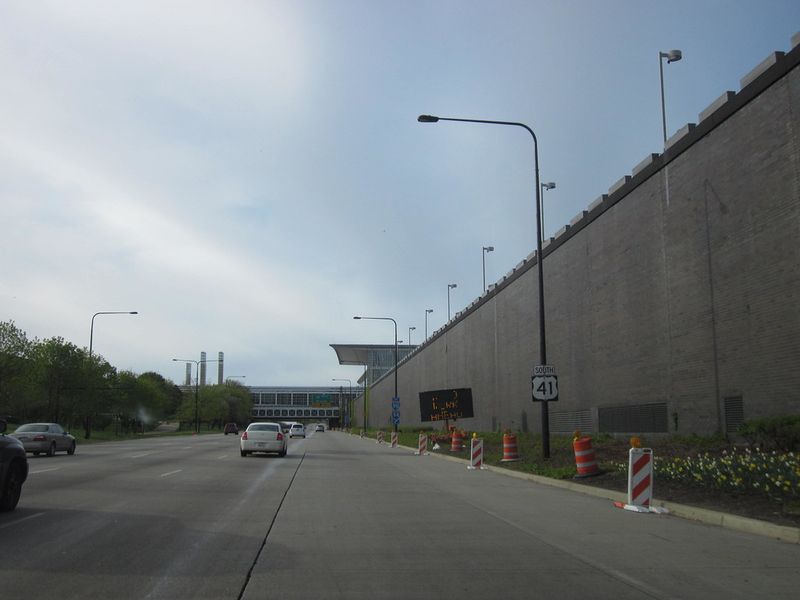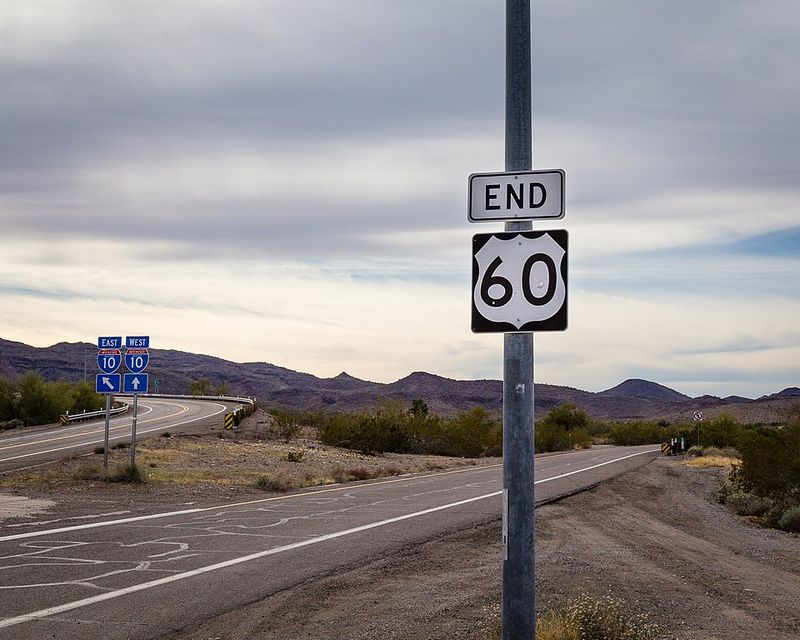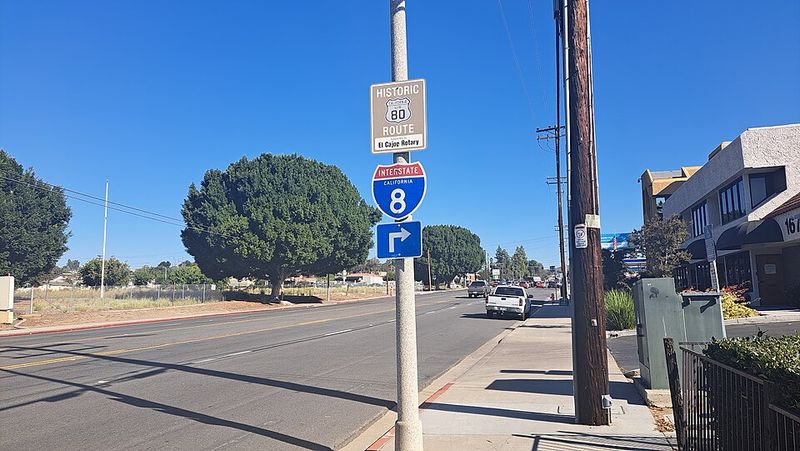America’s old highways still carry modern travelers across dramatic coastlines, wide deserts, and bustling city centers. These storied routes fueled migration, fed industry, and stitched together regional cultures that continue to define the nation. Follow along to discover the origins, landmarks, and hidden detours that make each road unforgettable. Ready to plan a nostalgic journey that still works perfectly today? Let’s roll.
1. U.S. Route 1
U.S. Route 1 is a living thread that stitches together Atlantic seaboard history from Maine to Florida. Born in the 1920s, it parallels the ocean and big-city corridors, offering a slower, story-rich alternative to the interstate. You’ll cross colonial-era towns, seafood shacks, and iconic lighthouses, then slip into the tropical vibe of the Keys. Urban segments from Boston to Miami showcase ambitious architecture and cultural mashups. Though traffic can be intense, detours reveal quiet beaches and marshlands. Route 1 rewards patience: look for historic districts, mom-and-pop diners, and water views. Every mile tells a different chapter of America’s coastal saga.
2. U.S. Route 2
U.S. Route 2 traverses America’s northern tier, linking Maine’s rugged shore to the Rockies and beyond. It’s quieter than southern transcontinentals, but rich with frontier atmosphere and small-town charm. Lumber mills, iron mining heritage, and rail-era depots surface in roadside museums and restored downtowns. In the West, the road brushes the edge of Glacier National Park and plains where storms roam freely. Expect long stretches between services and memorable sunrises across big water in the Great Lakes region. Local diners serve up regional comfort food. Route 2 embodies the wide-open promise of northern America, with wilderness never far away.
3. U.S. Route 6
Once the nation’s longest highway, U.S. Route 6 spans from New England mill towns to Rocky Mountain passes. It threads through factory-era main streets, prairie farmland, and canyon country, carrying echoes of mid-century road trips. Travelers encounter classic neon, brick storefronts, and old depots reborn as cafes and galleries. The road often shadows rail lines, revealing America’s industrial spine. In Colorado, hairpin climbs and river-cut canyons deliver dramatic vistas. Route 6 rewards slow travel and curiosity, with forgotten bypasses leading to time-capsule neighborhoods. It’s a cross-section of American persistence: practical, resilient, and quietly scenic mile after mile.
4. U.S. Route 11
U.S. Route 11 shadows the ancient Great Valley path, connecting Appalachian towns that predate the automobile. It parallels rail lines and, in places, Interstate 81, but keeps a human-scale rhythm of courthouse squares and country stores. Civil War battlefields, limestone caverns, and small colleges anchor its cultural map. The drive invites detours to farm markets and barbecue joints that define regional flavor. Architecture ranges from Federal-era brick to Art Deco theaters. Seasonal color dazzles in fall, while spring reveals pastoral greens. Route 11 offers a living history lesson, where everyday life and epic national narratives share the same road.
5. U.S. Route 20
America’s longest road, U.S. Route 20 stretches from coastal Massachusetts to the Pacific near Newport, Oregon. It’s a coast-to-coast sampler: clapboard New England, industrial Midwest river towns, plains grain elevators, and volcano-lined horizons. The highway unlocks access to Yellowstone and high-desert plateaus, yet still passes through neighborhoods where kids ride bikes. You’ll see WPA bridges, brick mills, and diners poured fresh coffee for generations. Storm fronts roll across Nebraska while Oregon’s mossy forests close in tight. Route 20 is a patient epic – less spectacle than accumulation. Take time, and the country reveals itself in detailed, everyday scenes.
6. U.S. Route 22
U.S. Route 22 ties together the industrial and Appalachian edges of the Mid-Atlantic, moving from Ohio River roots to New Jersey suburbs. It’s a tour of steel, coal, and canals, where repurposed factories host breweries and markets. The route hops across river towns with handsome bridges and brick warehouses. Roadside diners dish out pierogies and scrapple, reflecting immigrant histories. Expect tight merges, vintage motels, and ghost signs revealing twentieth-century commerce. Museums interpret canal heritage, while nearby hiking trails climb to overlook vistas. Route 22 is a working road – busy, sometimes gritty – but rich with stories about American reinvention.
7. U.S. Route 23
U.S. Route 23 carries a soundtrack. Known as the “Country Music Highway” in Kentucky, it traces the migration of Appalachian families and songs to Midwest cities. Murals, small museums, and theaters celebrate performers who shaped American music. The road transitions from hollers to lakeside suburbs near the Great Lakes, mirroring economic shifts. You’ll pass coal history exhibits, barbecue smokehouses, and antique stores. Traffic ebbs between rural calm and urban bustle. Route 23 reminds travelers that highways move culture as much as people, composing a melody of resilience, labor, and creativity along its sweeping north–south line.
8. U.S. Route 30
U.S. Route 30 inherits the legacy of the Lincoln Highway, America’s first coast-to-coast auto route. Its shoulders hide concrete markers, vintage cabins, and restored diners where travelers traded stories. Crossing Pennsylvania ridges, Midwestern corn belts, and high deserts, Route 30 blends big horizons with small-town main streets. Museums and interpretive sites keep early motoring history alive. Freight trains pace the roadway, testimony to enduring corridors of commerce. Detours reveal covered bridges and Victorian downtowns. Even where modern bypasses intrude, the old spine persists. Driving Route 30 feels like riffling a scrapbook of American mobility and ambition.
9. U.S. Route 40
U.S. Route 40 overlays the National Road, the young republic’s first great federal highway. You can still find stone mile markers, S-bridges, and fragments of brick paving. The route links Chesapeake tidewater to Midwestern plains through gracious courthouse towns and canal-era relics. Antique shops and old inns line segments where stagecoaches once rolled. It’s an education in transportation milestones – from wagons to motorcars to interstates. Scenic overlooks crown Appalachian ridges, while prairie stretches invite long reflection. Route 40 remains a teacher: practical, storied, and continually adapted to new travelers seeking old paths.
10. U.S. Route 41
U.S. Route 41 runs from Chicago’s skyline to the subtropical Gulf, stitching together lake breezes, farmland, and marsh. It skims museum campuses, ballparks, and classic neighborhoods before settling into rural cadence. Farther south, cypress knees rise beside the asphalt and seafood shacks perfume the air. The Tamiami Trail segment brings Everglades vistas and alligator sightings. Along the way, roadside motels flaunt neon histories and communities display immigrant cuisines. Expect varied driving conditions and frequent photo stops. Route 41 captures America’s shift from urban intensity to laid-back coasts in one compelling drive.
11. U.S. Route 50
U.S. Route 50 slices the country east to west, famed for Nevada’s “Loneliest Road.” But solitude is only part of the story. The route also touches capital corridors, Civil War sites, and fertile valleys. Across the Great Basin, shimmering mirages and empty basins reset your sense of scale. In the East, charming towns offer courthouses, cafes, and historical plaques. Ghost towns, petroglyphs, and mountain switchbacks spice the West. Services can be sparse – carry water and a full tank. Route 50 is about space and time, an invitation to breathe and drive into America’s vast middle distance.
12. U.S. Route 60
U.S. Route 60 is a diagonal storyteller, angling from Atlantic foothills to desert mesas. It drifts through bluegrass landscapes, Ozark river towns, and plains rail hubs before climbing toward the Southwest. Expect roadside horse farms, courthouse squares, and bridges spanning wide, busy rivers. Farther west, mission churches, neon, and red rock buttes announce new cultures. The road’s diverse scenery and history come alive in small museums and music halls. It’s a practical alternative to interstates, with plenty of room for discovery. Route 60 proves that diagonal lines can redraw how you see America’s map.
13. U.S. Route 70
U.S. Route 70 crosses the South with a mix of cotton country, barbecue capitals, and desert horizons. The route’s rhythm moves from blues-steeped towns to aerospace hubs and university districts. You’ll pass river crossings, courthouse squares, and stretches where old motels hum with neon after dark. In the Southwest, adobe buildings, mountain backdrops, and expansive skies redefine the drive. Local festivals, from food to music, punctuate the calendar. Route 70 rewards flexible pacing, encouraging stops for ribs, murals, and museum exhibits that unpack regional heritage. It’s a flavorful journey through America’s southern heart.
14. U.S. Route 80
U.S. Route 80, the Dixie Overland Highway, bridges Deep South history with Southwestern deserts. It passes civil rights landmarks, courthouse greens, and college towns before stretching into cactus-studded horizons. Spanish missions, iron bridges, and roadside pecan stands mark the miles. Expect humidity, hospitality, and hearty cuisine back East; dry heat and starry skies out West. Many segments were bypassed by interstates, leaving intact main streets and vintage motels. Route 80 is ideal for travelers seeking context – each stop a footnote to national turning points and regional pride. Slow down, look closely, and the narrative unfolds.
15. U.S. Route 90
U.S. Route 90 traces the Gulf Coast and lower South with breezy causeways and soulful cities. It links jazz and seafood, shipyards and beaches, carrying salt air into historic districts. Spanish moss frames antebellum homes, while Art Deco hotels and neon signs brighten the waterfront. Hurricanes have reshaped portions, but communities rebuilt with grit and grace. You’ll taste po’boys, boudin, and Gulf shrimp from roadside joints. Detours reach barrier islands and birding sanctuaries. Route 90 is a sensory feast – music, spices, surf, and sunlight – sustained by a culture that dances back after every storm.



















